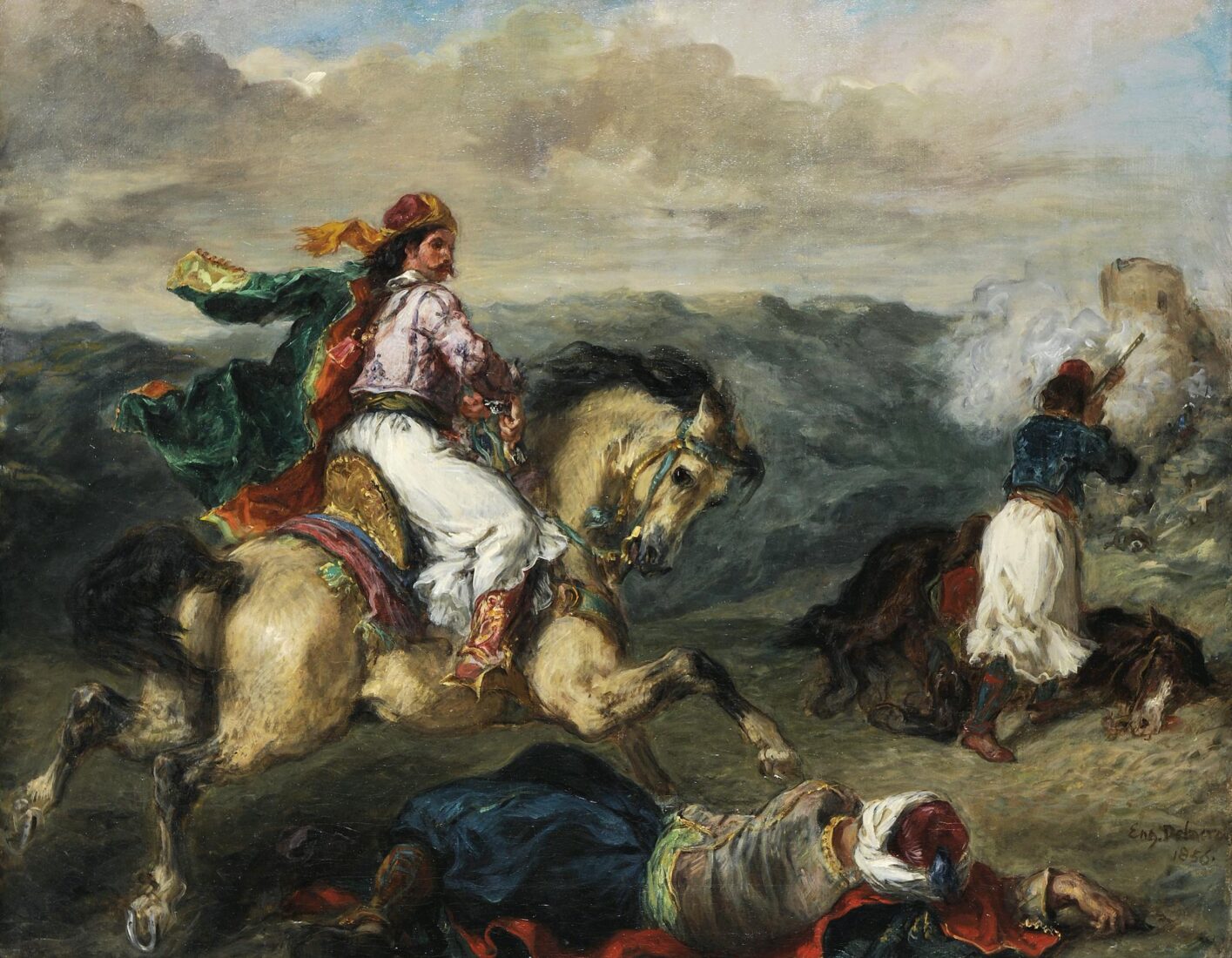We use cookies to make our site work properly, to personalize content and ads, to provide social media features and to analyze our traffic. We also share information about how you use our site with our social media, advertising and analytics partners. Read the Cookies Policy.

Delacroix Eugene (1798 - 1863)
Episode from the Greek War of Independence, 1856
Oil on canvas, 65,7 x 81,6 cm
Purchased by the Greek State with the contribution of Vassilis Goulandris and Stavros Niarchos
Approximately thirty years after the founding of the modern Greek state, the subjects connected to the Greek War of Independence continued to inflame the imagination of certain artists who belonged to the so-called Romantic generation and who had been captivated by the spirit of philhellenism. Though this could be viewed as an eccentricity, and a marked preference for whatever smacked of the oriental, the painting by Delacroix – which impartially bears the neutral title, “Episode from the Greek War of Independence”, independent of any anecdotal element it may contain – not only could but must be confronted, conversely, as a painterly revival of a subject the artist had already been involved with during his youth, in 1826-1827, a painting known under the title “Scene from the Contemporary War Between the Turks and Greeks”, a title as neutral as the previous one (Winterthuur, Oscar Reinhart Collection). The presentation of this work at the Paris Salon, in October 1827, was received by the official criticism of the time in a somewhat less than complimentary fashion. The work was characterized, for example, as “bad both in terms of form and color”, despite the fact there was “a certain amount of movement in it, when viewed as a whole”.
The painting at the National Gallery is not merely a new version of the lost work of the painter’s youth, and one which had the exact same dimensions, but a version produced by an artist who had himself matured, enriched by means of his lucid vision in terms of color, design, light and, first and foremost, the composition’s expressivity. “Contemporary subjects [are] difficult for one to handle because of the absence of the nude and the austerity of the garments”, he wrote on 13 January 1856 (Dairy, vol. III, 24). There can be no doubt that one of the basic elements of the painting, that is, the attire of the mounted warrior depicted in full detail – the white foustanella, the variety of leggings, the black sash-belt, the embroidered waistcoat and the superb green cape, which is lined with red silk, and flutters in the air with the same movement as that of the fez and the headscarf – as well as the Greek horseman himself, depicted from the side, guide both the eyes and the reading by means of the colors and the design.
The horse – just as Rubens would have rendered it – is also a participant, if in a somewhat supplementary manner; its galloping does not of necessity lead to a direct confrontation between “good” and “bad”, between Christian and infidel. Delacroix avoided any kind of allusion to war which could be interpreted historically and created a painting which is expressed more through color and motion than through any specific subject matter. The painter of the “Massacre at Chios” here again made use of an antiheroic, antiepic style, in which the only real warrior shown with his rifle, his dead horse and the dead Ottoman – symbol of defeated Islam, over whom the horse jumps – all function merely as supplementary characteristics. It is obvious that the absence of dramatic elements – such as those found in scenes of single combat, in a work from 1926 (“The Giaour and Hasan”, Chicago, Institute of Art) and 1836 (“The Battle of the Giaour and the Pasha”) or 1856 (“The Giaour and the Pasha”, Cambridge, Massachusetts, The Fogg Art Museum) where the brushstroke itself gets carried away and reaches the boundary of true violence – only serves to underline in this specific work the subject of the struggle for freedom: the mounted Greek warrior can be interpreted as the embodiment, par excellence, of the ideal, an idea which has been cleansed of any superfluous element connected to a historically and actually recognizable timeliness.

